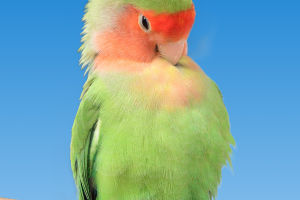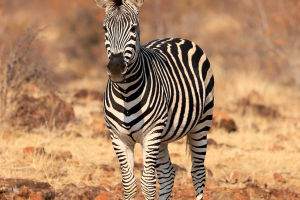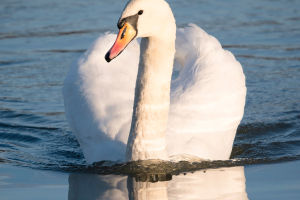The goose is a species of waterfowl that belongs to the family Anatidae. They possess plump bodies, long necks, flat beaks, and webbed feet that are well-suited for life in water. Geese are found across the globe, including Asia, Europe, and North America.
There are various species of geese, with the gray goose being the most renowned. Gray geese are large in size, sporting gray bodies and black-and-white plumage. They exhibit remarkable adaptability and can thrive in diverse environments, including lakes, rivers, and oceans.
Geese are highly social animals, often forming large groups referred to as "goose teams." They exhibit strong group dynamics and protective instincts, collaborating to locate food and safeguard themselves against predators.
Being omnivorous, geese have a diet that includes plants and insects. They commonly forage in meadows, consuming grass, leaves, and roots.
Their digestive system is robust and capable of processing coarse plant fibers.
Geese hold significant cultural value for humans. They have been domesticated for various purposes in agriculture, providing meat, feathers, and eggs.
Moreover, geese are often kept as decorative animals, frequently seen in parks, estates, and lakes.
Overall, geese are beloved creatures known for their distinctive appearance, social behavior, and adaptability. Whether in natural habitats or human societies, geese play a crucial role in our lives.
Some animals exhibit fear towards geese due to their distinct characteristics and behavior, which can be perceived as threatening or alarming.
Here are a few reasons why other animals may feel apprehensive about geese:
1. Size and Appearance: Geese are generally larger than many other animals, featuring plump bodies and elongated necks. Their imposing and majestic appearance can unsettle other creatures.
2. Defensive Instincts: Geese possess strong protective instincts and will actively defend themselves and their territories.
When they sense danger, they emit warning calls, extend their wings, open their mouths, or even pursue potential threats. Such aggression and deterrence can instill fear in other animals.
3. Aggressive Behavior: While geese are typically amicable towards humans, they may display aggression when they feel threatened or provoked. They might use their beaks, wings, and claws to attack other animals, instigating fear.
4. Group Behavior: Geese frequently congregate in large flocks, known as "goose flocks." When other animals encounter a sizable group of geese, they may feel uneasy and fearful.
This is because geese exhibit collective behavior and protective instincts, working together to confront potential threats.
However, it is important to note that not all animals are fearful of geese. Different species possess unique instincts and adaptive strategies, leading to varying responses.
Additionally, human interactions with geese can influence their perception and behavior towards these birds.


